|
Displaying items by tag: washington d.c.
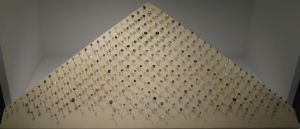
Over the course of 25 years in the 1980s and 1990s, Harry Rodman, a veteran gold refiner from New York City, and Alan Bronstein, a diamond dealer from New Jersey, assembled the Aurora Pyramid of Hope Diamonds, the most comprehensive collection of colored diamonds in the world. Featuring 295 rare gems, the collection became a point of controversy after Rodman died at the age of 99 in 2008.
Last year, Rodman’s heirs hit Bronstein with a lawsuit claiming that they were entitled to Rodman’s half of the diamond collection, which one appraiser valued at $14 million. The case became more complicated as Rodman, who made several wills in the last ten years of his life, was not only Bronstein’s partner, but also his stepfather. The legal dispute recently came to a close when Bronx Surrogate Judge Lee L. Holzman ruled that Bronstein fairly bought out Rodman’s interest in the Aurora Pyramid collection as well as another well-known grouping of diamonds known as the Aurora Butterfly of Peace.
The Aurora Pyramid of Hope, which is currently on loan to London’s Natural History Museum, has been exhibited at the Smithsonian Institution in Washington, D.C. and the American Museum of Natural History in New York. Bronstein plans to keep exhibiting the collection in museums for the benefit and enjoyment of the public.
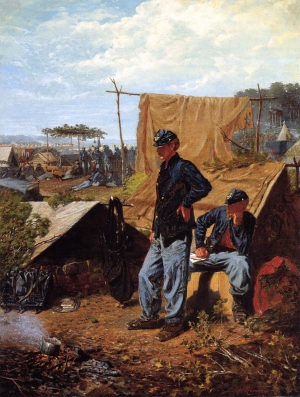
The Smithsonian in Washington, D.C. is currently hosting a number of events commemorating the 150th anniversary of the arrival of the Emancipation Proclamation (1963) during the Civil War (1861-1865). The exhibition, The Civil War and American Art, focuses on how the devastation, emotions, and revolution associated with the war affected what appeared on the canvas for many artists working at the time.
Now on view at the Smithsonian’s American Art Museum, The Civil War and American Art relies on Winslow Homer (1836-1910), Eastman Johnson (1824-1906), Frederic Church (1826-1900), and Sanford Gifford (1823-1880) to ground the show. Through 75 works including paintings and vintage photographs, the exhibition creates a linear model, which mirrors the progression of the Civil War as a sense of unease on the eve of war transitioned to hope that the conflict would be resolved speedily to the harsh realization that there were too many wrongs to be righted quickly. Genre and landscape painters best captured the transformative effect of the Civil War as amber waves of grain were reduced to trampled crops, burned-down trees, and blood-soaked fields littered with bodies. There was also much to grapple with as the war ended and the country was left to restore itself and its identity.
The photography component of the exhibition includes snapshots taken on the battlefield by Alexander Gardner (1821-1882), Timothy H. O’Sullivan (1840-1882), and George Barnard (1819-1902). These photographs, which document the Civil War’s carnage and destruction, shed light on the very real devastation that was suffered by many.
The Civil War and American Art will be on view at the Smithsonian through April 28, 2013 and will travel to the Metropolitan Museum of Art (May 21-September 2, 2013) in New York after its run in Washington.
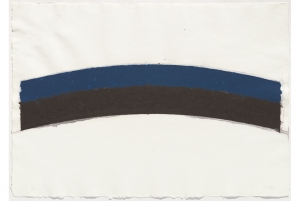
Ellsworth Kelly: Colored Paper Images is currently on view at the National Gallery of Art in Washington, D.C. through December 1, 2013. Kelly (b. 1923), a painter, printmaker, and sculptor, is best known for his hard-edge and Color Field paintings as well as for his involvement in the minimalist movement.
The exhibition at the National Gallery features a series of paper-pulp works that were first unveiled in 1977. The 23 works, which are drawn from the museum’s collection, feature erratic edges and irregular textures, a departure from Kelly’s previous works, which are comprised of sharp angles and precise curves. Earl A. Powell III, director of the National Gallery of Art said, “Kelly has long been recognized for his mastery of form and color, but even to those who know his work well, these Colored Paper Images will come as a revelation.”
A pioneering force in postwar abstraction, Kelly created his colored paper images by placing molds on single sheets of paper and filling them with colored and pressed paper pulp. Once the pulp settled, the molds were removed and the sheet along with the colored pulp was run through a printing press, fusing the damp paper layers together. Multiple impressions were made of each image.
The National Gallery of Art has a longstanding relationship with Kelly, which began in 1975 when the institution acquired its first work by the artist. The Gallery now owns over 200 pieces by Kelly including paintings, sculptures, drawings, and prints.
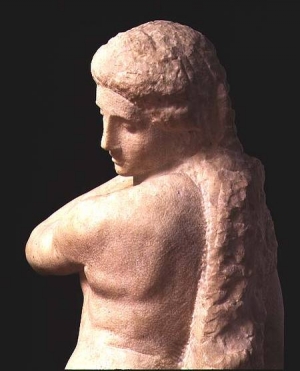
As part of a yearlong celebration of Italian culture hosted by Italy’s foreign minister, Michelangelo’s (1475-1564) iconic work, David-Apollo, will be go on view today at the National Gallery of Art in Washington, D.C. Minister Giulio Terzi di Sant’Agata unveiled the sculpture yesterday, December 12. David-Apollo will be on view in the West Building’s Italian galleries through March 3, 2013.
Michelangelo carved David-Apollo in 1530 for Baccio Valori, who served as the interim governor of Florence per the Medici pope Clement VII’s appointment. Michelangelo and the pope were at political odds, but the artist wished to make peace with the Medici through his work. Michelangelo never finished David-Apollo as he left Italy and never returned after Clement VII’s death.
Part of the Museo Nazionale del Barello’s collection in Florence, David-Apollo traveled to the National Gallery once before in 1949. The masterpiece’s installation in Washington over sixty years ago coincided with former president Harry Truman’s inaugural reception and attracted more than 791,000 visitors. In 2013, David-Apollo’s presentation will coincide with President Barack Obama’s inauguration.
The Year of Italian Culture, launched by Sant’Agata under the auspices of the President of the Italian Republic, Giorgio Napolitano, will bring a range of Italian masterpieces to nearly 70 cultural institutions across the United States. Works range from classical and Renaissance to baroque and contemporary and cover the realms of art, music, theater, cinema, literature, science, design, fashion, and cuisine.
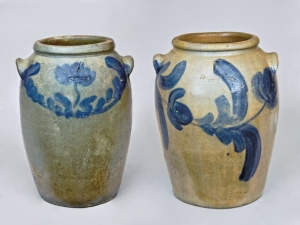
On the night of August 8, 1850, abolitionist William Chaplin attempted to carry out a plan he had successfully executed many times before—ferrying runaway slaves out of the District of Columbia, through Maryland, to freedom. The slaves in question belonged to Georgia representatives Robert Toombs, later vice president of the Confederacy, and Andrew Stephens, later Confederate secretary of state and army general. As Chaplin and the two men tried to cross into Montgomery County, local authorities descended on their carriage. Chaplin and the slaves opened fire, but managed little injury to the officers, the greatest wound falling to Richard Butt, a local bureaucrat who took a bullet in the arm. The Chaplin affair made national news; the abolitionist's bullet-ridden carriage was put on display and viewed by thousands on a street corner in Washington, and stories ran in papers as far away as Wisconsin. None, however, mentioned that Richard Butt had, some years earlier, been the proprietor of Washington's most prolific stoneware manufactory.
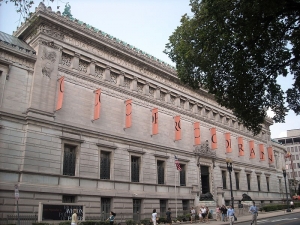
Fans are breathing a sigh of relief after Washington, D.C.’s Corcoran Gallery of Art decided against selling its historic Beaux-Arts home and moving to the suburbs. The cash-strapped institution shocked fans with the proposal, which was announced this summer. Ultimately, the Corcoran’s board of trustees decided that the museum and its associated College of Art and Design, which is in close proximity to the White House, should stay put.
Designed by Ernest Flagg, the Corcoran Gallery opened to the public in 1897 and remains the largest privately supported cultural institution in Washington, D.C. The museum, which specializes in American art, is currently in need of $130 million worth of renovations. While the institution’s façade was restored last year, the galleries are still in need of a major overhaul, which is the main reason why Corcoran officials were considering the sale to begin with.
Although the institution has been struggling financially for years, strong reaction to the potential move has proved inspirational. The Corcoran is considering embarking on partnerships with like-minded institutions and collaborations with other D.C. museums, including the National Gallery of Art, have been explored.
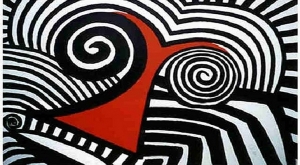
The month after a Salvador Dali sketch turned up at Washington state Goodwill shop, an Alexander Calder lithograph was discovered at one of the bargain chain’s outposts in Milwaukee, WI. Karen Mallet, a media relations specialist for Georgetown University in Washington, D.C., bought the print for $12.34 after she spotted a Calder signature on the bold black-and-white artwork.
Mallett did some research on the Internet and found a number of Calder lithographs that bore a striking resemblance to the work she had purchased. She discovered that the piece in question, titled Rudolph, was the 55th lithograph in a series of 75 created by Calder in 1969. Jacobs Fine Art Inc. in Chicago valued the piece at $9,000.
An important American artist of the 20th century, Calder is best know for his sculptures, specifically his mobiles and stabiles. However, Calder also produced an impressive number of paintings and prints throughout his illustrious career.
Although Mallett was not particularly enamored by the Calder lithograph at first, she says that she is growing to like it and has no plans to sell.
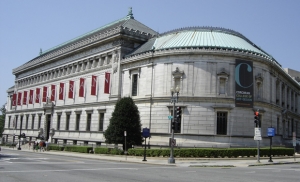
The Corcoran Gallery, Washington D.C.’s oldest art museum, has been losing money for years and is currently in need of at least $130 million in renovations. The only major museum on the Mall that is privately owned, times have been tough for the Corcoran who must charge admission and raise large amounts of money to survive. Attendance has dropped drastically and donations to the museum have roughly halved since the recession.
The Corcoran’s commanding Beaux Arts façade and top-notch collection of 17,000 works including pieces by Winslow Homer, Edward Hopper, John Singer Sargent, Claude Monet, and Willem de Kooning are simply not a big enough draw to keep the institution afloat, especially when every other institution on the Mall offers free admission. The Corcoran’s board of trustees are currently debating between a number of options to keep the museum active including selling the current building, combining forces with another institution, and moving out of the city.
While many find the loss of the Corcoran will leave the Washington Mall with a gaping hole, the museum announced that they have been discussing possible solutions with the National Gallery of Art, George Washington University, and a few other unnamed institutions. The Corcoran hired a real estate firm as its adviser in September and hopes to have its future mapped out by the first half of 2013.
The District of Columbia Historic Preservation League is looking to extend the landmark designation for the Corcoran’s exterior and interior. If the institution were approved, any major construction would be subject to public review.
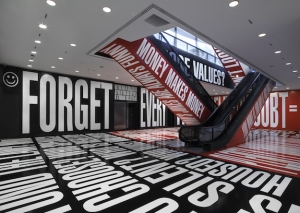
The Smithsonian's Hirshhorn Museum and Sculpture Garden commissioned internationalled renowned artist Barbara Kruger to create a site-specific installation for one of the museum's most-visited public spaces. Opening Aug. 20, "Belief+Doubt"(2012) will fill the lower-level lobby and extend into the newly relocated museum bookstore. Approximately 6,700 square feet of surface--including walls, floor and escalator sides--will be covered in text-printed vinyl, surrounding viewers with lettering up to 12 feet high in a high-contrast color scheme of red, white and black.
"Belief+Doubt" speaks to the social relations and networks of power that define daily life. At a time when the value of certitude is taken for granted, Kruger says she is "interested in introducing doubt." Large swaths of the floor are covered in open-ended questions ("WHO IS BEYOND THE LAW? WHO IS FREE TO CHOOSE? WHO SPEAKS? WHO IS SILENT?"), while the area facing the bookstore explores desire and consumption ("YOU WANT IT. YOU BUY IT. YOU FORGET IT.").
|
|
|
|
|